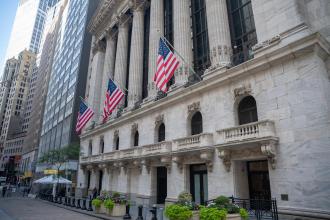The recent decision by Federal Reserve Chair Jerome Powell to keep future rate cuts uncertain has certainly stirred the market. On Wednesday, the Fed announced a 0.25% reduction in interest rates, lowering them to a range of 3.75% to 4%—an expected move as the central bank seeks to bolster the job market amid economic uncertainty. However, Powell emphasized that a further rate cut in December is "far from guarantees," indicating a divisive atmosphere among Fed officials about future economic strategies. This nuance complicates the broader economic landscape, especially considering the ongoing government shutdown, which has halted reliable data that the Fed typically uses to inform its decisions.
Economic Split: Job Growth vs. Inflation
The Federal Reserve’s dual mandate—promoting maximum employment while stabilizing prices—has become increasingly challenging in the face of mixed economic signals. While the rate cut aims to stimulate job growth, inflation remains higher than the Fed’s target of 2%. This stark contrast has caused concern among Fed officials, who are torn between two differing economic philosophies: one advocating for sustained rate cuts to encourage employment and another suggesting a cautious approach to combat inflation.
The Fed’s recent strategy signals a pragmatic shift in priorities. Powell’s comments reflect a recognition that job growth has stagnated, necessitating support through lower borrowing costs. Still, with inflation fears looming and economic data proving inconsistent—partly due to the government shutdown—the committee remains split on how aggressively to act moving forward.
Market Reactions
The immediate market response to Powell’s announcement was mixed. Many investors had expected a clearer path toward further rate cuts, and the uncertainty from Powell’s statements sparked volatility. While some sectors may benefit from lower rates, others remain cautious. Stocks like Nvidia, which became the first company with a valuation exceeding $5 trillion, put forth an impressive showing amid the mixed overall performance. Nvidia’s surge reflects its strong positioning in AI gaming and infrastructure, capturing investor interest during an uncertain economic climate.
Nvidia’s ascendency also speaks to a larger trend in the tech sector, where firms leveraged AI advancements amid economic fluctuations. As AI continues to attract significant investments, Nvidia’s recent partnerships—including collaborations with Nokia and Oracle—serve as potential growth catalysts.
Corporate Landscape
The broader corporate landscape showcases divergent performances across sectors. Companies like Caterpillar reported impressive gains driven by strong demand for their products, especially in energy and construction, contrasting with firms suffering setbacks, such as Etsy, which saw a dip in stock following leadership changes.
The health sector also offers compelling narratives with Centene’s surprising profit results resonating positively in stock performance. This illustrates the varying impacts of market dynamics on different sectors and companies. Conversely, companies like Boeing faced challenges, with substantial losses marking its financial report, raising questions about future profitability amid delayed product deliveries.
Future Prospects
Looking ahead, Powell’s reassurances about the Fed remaining vigilant to economic changes play a crucial role in shaping market expectations. The potential for further cuts remains contingent on economic data that, as mentioned, has become less reliable. The ongoing tension between stimulating growth and controlling inflation means that investors must remain alert to shifts in Federal Reserve messaging and data releases.
Moreover, consumers’ perspectives reveal anxiety about inflation, anticipating a rise to 5.9% in the coming year, which starkly contrasts with Fed forecasts of decreasing inflation. This gap may have longer-term implications for market confidence, particularly if consumers begin to curtail spending amid inflation concerns.
Conclusion
In summary, the mixed responses seen across the stock market following Powell’s remarks underscore the complex interplay between corporate performance and Federal Reserve policies. As companies like Nvidia continue unprecedented growth through AI advancements, the broader focus on job growth versus inflation remains a critical theme. Stakeholders will need to navigate this landscape with care, balancing optimism with caution as they assess the implications of the Fed’s next moves. The interplay of economic data, corporate performance, and consumer sentiment will ultimately shape market trajectories in the months to come.

:max_bytes(150000):strip_icc()/GettyImages-2243603638-91b9aec6a1ef4c5c8c0d7415bbb5d765.jpg?ssl=1)







